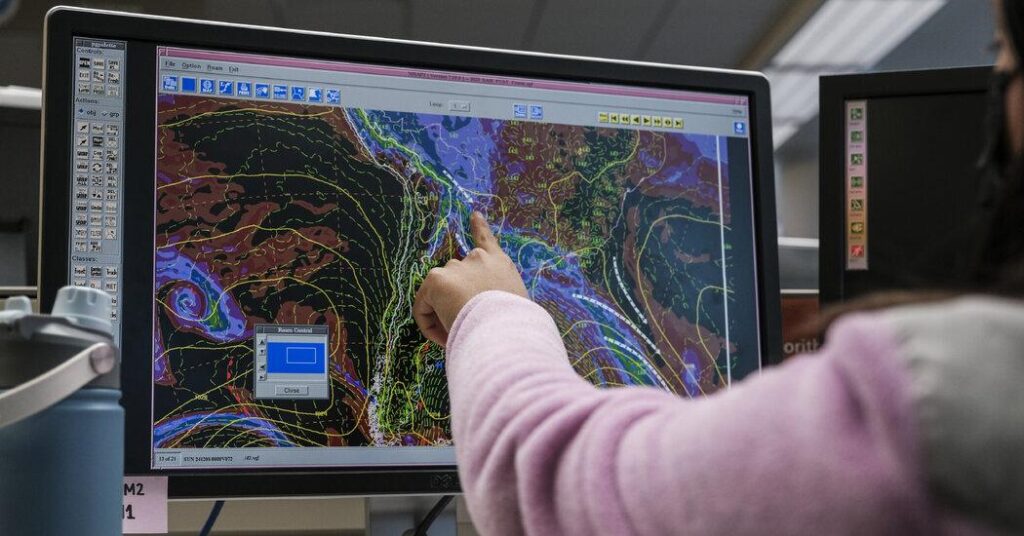Protecting NOAA: A Crucial Step in Climate Action
As the global community intensifies its focus on mitigating climate change, recent discussions regarding the potential reduction of essential functions within the National Oceanic and Atmospheric Administration (NOAA) have sparked significant concern among scientists and environmental advocates. NOAA is a key player in monitoring atmospheric conditions, particularly carbon dioxide levels, which serve as critical indicators of our planet’s climate health. Any cuts to its operations could not only compromise the precision of these measurements but also hinder worldwide efforts to address the climate emergency. This article delves into the ramifications of these proposed reductions, highlights NOAA’s vital contributions, and examines their implications for our understanding and response to one of today’s most urgent challenges.
Effects on Climate Science and Policy Making
The potential scaling back of NOAA’s fundamental operations presents a serious risk to both climate science research and policy development. As a leading authority in environmental science, NOAA has been pivotal in collecting and analyzing data related to atmospheric carbon dioxide concentrations. This data is essential for recognizing long-term climatic patterns and predicting future scenarios. Inconsistent data availability would pose significant obstacles for researchers striving to create reliable climate models, complicating efforts to formulate effective policy responses. A weakened framework for monitoring greenhouse gases could result in misguided initiatives based on incomplete or erroneous information—jeopardizing years of scientific advancement.
Furthermore, these consequences extend beyond academic research into practical environmental policies that shape our response strategies against climate change. Policymakers depend heavily on comprehensive datasets when making decisions about carbon regulations, investments in renewable energy sources, and public health initiatives. Disruptions in data continuity may exacerbate difficulties encountered while striving toward international climate objectives. Key areas likely affected include:
- Strategies for Emission Reduction: Effective strategies rely on precise emissions statistics.
- Global Climate Agreements: The reliability of monitoring commitments diminishes without consistent evaluations.
- Civic Engagement: Transparency regarding data is crucial for fostering public involvement in combating climate change.
The preservation of NOAA’s capabilities is vital not only for advancing scientific knowledge but also for nurturing grassroots support within communities nationwide. As instances of climate-related disasters rise sharply, access to dependable data becomes increasingly critical—impacting local initiatives as well as global agreements aimed at addressing this pressing issue.
Global Implications if NOAA’s Functions are Reduced
The potential curtailment of NOAA’s functions could have extensive repercussions that extend far beyond U.S borders; it threatens global endeavors focused on combating climate change effectively. The lack of reliable information from such an influential institution risks undermining years spent enhancing our understanding and management strategies concerning carbon emissions globally. Several crucial areas stand at risk due to diminished monitoring capabilities:
- Data Integrity: A decrease in operational capacity may lead to inaccuracies regarding reported carbon levels—compromising existing models used by scientists worldwide.
- Cohesion Among Nations: Numerous international agreements depend upon accurate data from NOAA; disruptions could stall vital collaborations between countries.
- Lawsuit Formulation: Lawmakers require precise information when crafting regulations; gaps can result in poorly conceived or ineffective policies being enacted.
- Civic Awareness: Reduced visibility into carbon metrics might lessen public urgency around addressing this crisis—diminishing grassroots movements dedicated towards meaningful action against it.
| Affected Area | Potential Outcomes | |
|---|---|---|
| Your Research Initiatives | A halt or slowdown across numerous studies due lack baseline metrics available from federal sources like NOAAs work products . | |
| Funding Opportunities td > | Diminished federal funding directed towards projects related specifically with climatology due declining credibility surrounding collected datasets . td > < / tr > < / tbody > Strategies To Fortify NOAA’s Role In Environmental Science EffortsA comprehensive approach must be adopted if we aim at bolstering NOAAs effectiveness amidst pressing ecological challenges ahead . First off , enhancing collaboration between NOAAs team members alongside academic institutions will facilitate knowledge exchange while driving innovation forward . By initiating joint research programs , they can leverage vast expertise available out there – ultimately leading up-to-date findings concerning both climatic shifts & methods employed during assessments involving greenhouse gas emissions tracking systems ! Additionally , expanding partnerships with international organizations focused solely upon environment protection will enhance coordination efforts globally – thus improving overall responsiveness whenever crises arise! p > Moreover investing resources into technological advancements remains paramount so that we keep pace with evolving demands placed upon us today! Establishing dedicated funds earmarked specifically towards upgrading existing infrastructure ensures continued leadership position held by noaa within realm pertaining directly towards environmental sciences! Prioritizing next-gen satellite systems along ground-based stations capable yielding timely accurate readings surrounding CO₂ concentrations should be top priority moving forward! Furthermore implementing thorough training programs designed equip personnel working under noaa umbrella enables them utilize cutting-edge technologies efficiently! p > |
